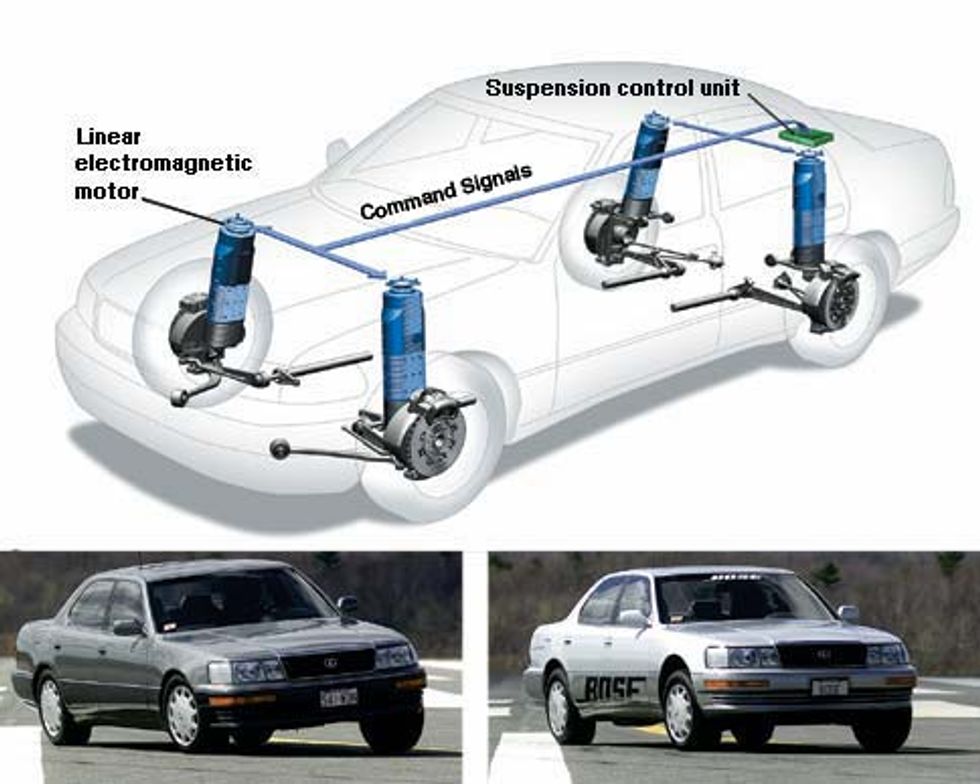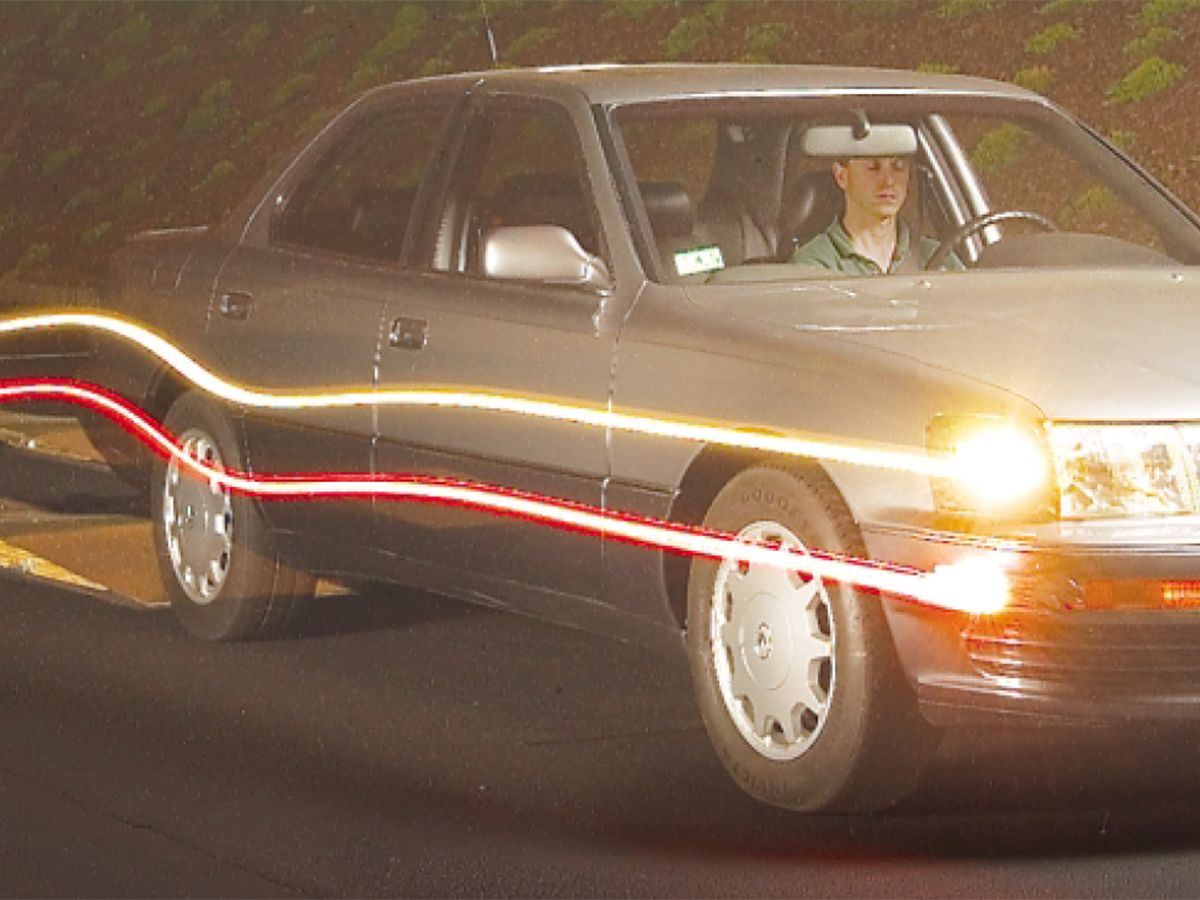
For a century, automotive engineers have faced the same choice: they could provide the smooth ride of a Cadillac or the precise handling of a Maserati, but not both. Now a man who made his name by making high-end speakers plans to adapt his work to the task of giving drivers the ride they choose, when they choose it.
The man is Amar G. Bose, founder, in 1964, of Bose Corp., in Framingham, Mass., and formerly a professor of electrical engineering at the Massachusetts Institute of Technology, in Cambridge.
In a demonstration video showing a Lexus sedan being put through its paces on a test track, the car’s body barely moves when slaloming around traffic cones, taking a tight corner, and coasting along bumpy surfaces. Nor does the front end dip when the test driver slams on the brakes. Alongside it, a Bose-less Lexus performs the same maneuvers with considerable rock and roll.
Bose officials say the suspension system still needs more testing, but they expect to field a commercial version within five years.
Bose isn’t the first to try to control the ups and downs of a car’s wheels [see photo, "Smoothing The Ride”]. The idea, called active suspension, has been around for at least a decade. Yet even today’s most advanced commercial version, Delphi’s MagneRide suspension, is not fully active. The system, which first appeared three years ago, actively modulates an essentially passive element called a damper, a fluid-filled cylinder that resists the vertical movement of the wheel. MagneRide uses a fluid that changes its viscosity up to 1000 times a second in response to a magnetic field, a rate sufficient for most bumps. But on a big bump, the wheel just can’t move fast enough. The Bose suspension, which is completely active, can handle just about any bump.
The Bose system equips each wheel with its own linear electromagnetic motor, similar to those that propel modern roller coasters. The motor works not by revolving but by telescoping up or down to do what shocks and springs do, but much faster. Algorithms manage the car as a whole, preventing body roll during turns and keeping the car from dipping forward when it stops.
Say the left front wheel is just starting to sink into a pothole. Accelerometers on each wheel and on the chassis feed data to a central controller, which runs algorithms that determine what is happening and channel current to the left front motor—all in about a millisecond. The motor lengthens, forcing the tire into the hole, after another millisecond or two. On the far side of the pothole, the same process governs retraction of the wheel [see figure, "Quadraphonic Shocks"].

The company drew on its experience with sound reproduction. The voice-coil technology that drives Bose speakers proved perfect for driving the linear motors, because both applications modulate high-frequency electrical pulses in response to randomly occurring events—music in one case, potholes and hairpin turns in the other. Indeed, the suspension’s motors may be regarded as the world’s strongest quadraphonic speakers, even though they hardly make a sound.
The project, begun in 1980, was conducted with such secrecy that even some Bose executives were kept in the dark. The next five years were spent doing the mathematical calculations aimed at figuring out what might be possible in an ideal world. Then the team looked for technologies that could handle the dizzyingly complicated algorithms, and it set about building the motor.
No available motor “had the combination of force and efficiency in the package size we needed, so we had to create it,” says Neal Lackritz, the project’s lead engineer. There were no amplifiers that filled the bill, either, so they started to develop them. They counted on the computer industry to provide the computation speed they would need to handle the deluge of data from the sensors when the car was moving at highway speeds.
By 1989, the researchers had developed the first prototypes, which were still too large to fit in a standard vehicle. Since then, the motors have been shrunk, and the engine doesn’t have to work so hard to overcome the wheels’ own inertia, saving fuel. The system also lets a vehicle ride lower at highway speeds to produce less drag and improve handling.
To save even more power, the suspension is regenerative. When the far side of a pothole helps to push the wheel up, “we get to recover almost all of the power” that had pushed the wheel into it, Lackritz says. The motors momentarily become generators, shunting the recovered energy to storage, either in the engine battery or in some other device. The system ends up consuming one-third of the energy used by a car’s air conditioner.
Bose has been awarded a few patents for its designs. But because it was clear from the start that the team was looking at decades of work before a car with such a system rolled out of a showroom, Bose has “purposely waited to file a lot of our patents until as late in the game as possible, because we don’t want them to expire before we get the product to market,” Lackritz says. Good foresight, considering that any patents the company might have filed in 1985 would have expired this year.

